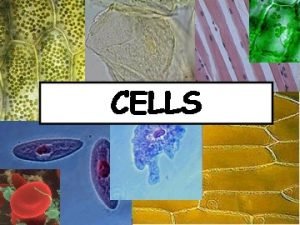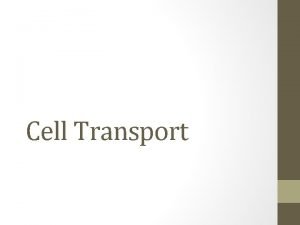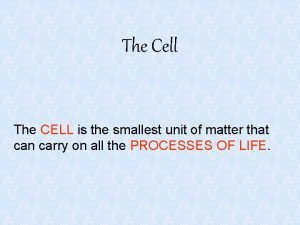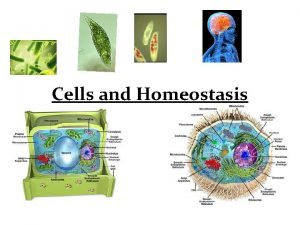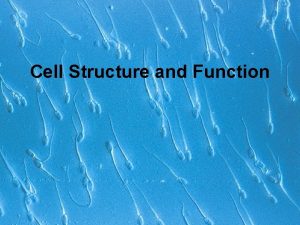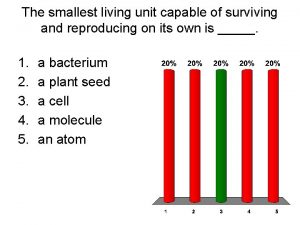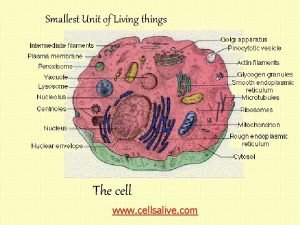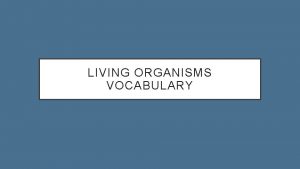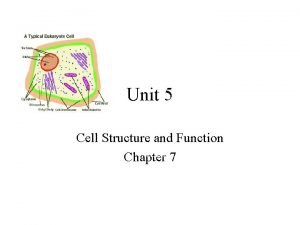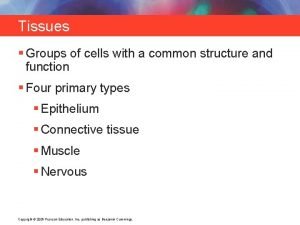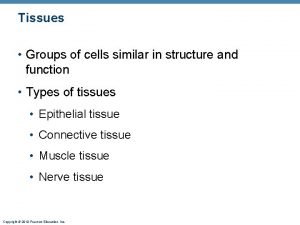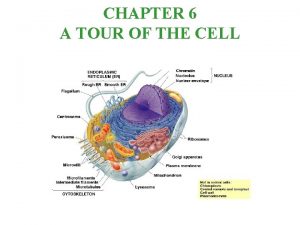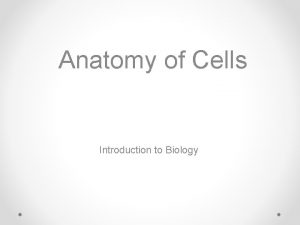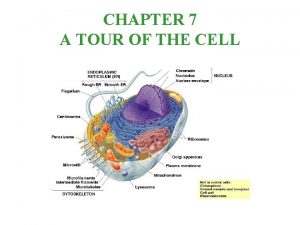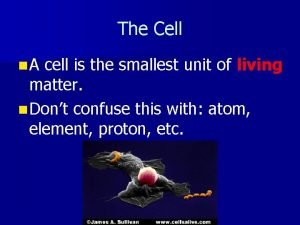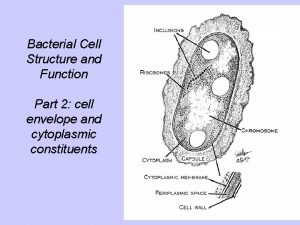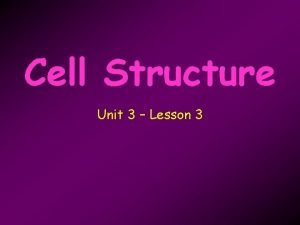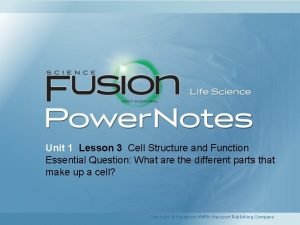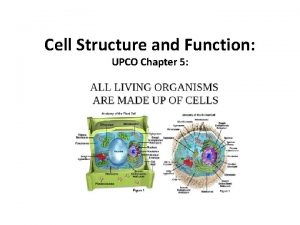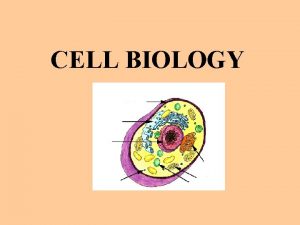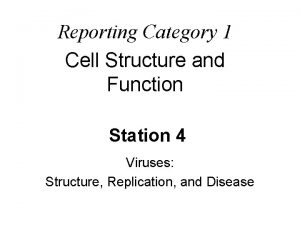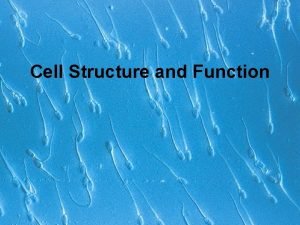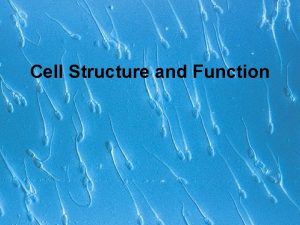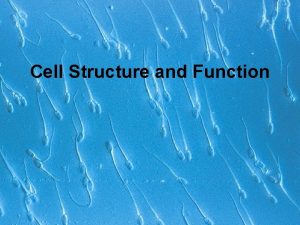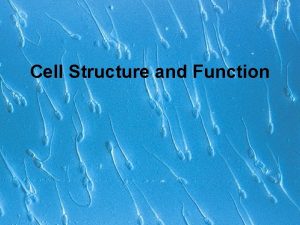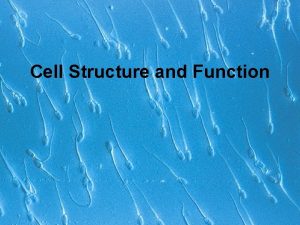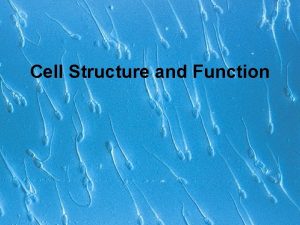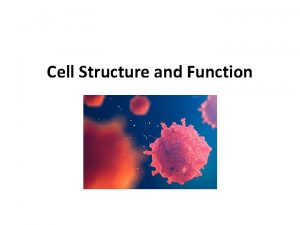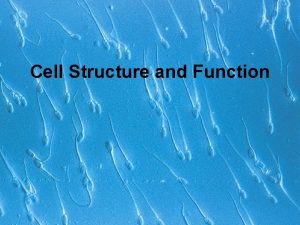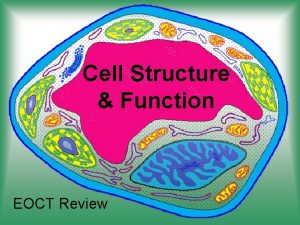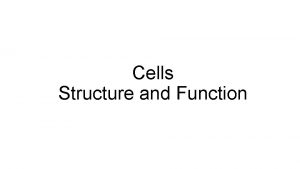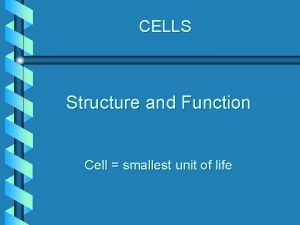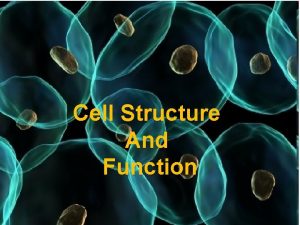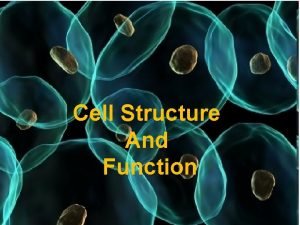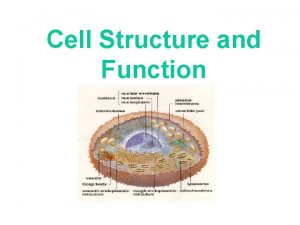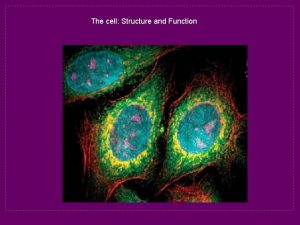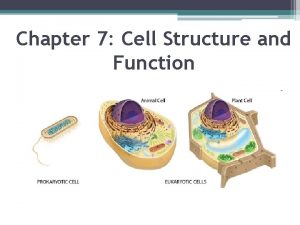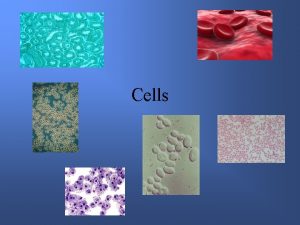Cell Structure and Function Cells Smallest living unit







































- Slides: 39

Cell Structure and Function

Cells • Smallest living unit • Most are microscopic

Discovery of Cells • Robert Hooke (mid-1600 s) – Observed sliver of cork – Saw “row of empty boxes” – Coined the term cell

Cell theory • (1839)Theodor Schwann & Matthias Schleiden “ all living things are made of cells” • (50 yrs. later) Rudolf Virchow “all cells come from cells”

Principles of Cell Theory • All living things are made of cells • Smallest living unit of structure and function of all organisms is the cell • All cells arise from preexisting cells (this principle discarded the idea of spontaneous generation)

Cell Size

Cells Have Large Surface Area-to-Volume Ratio

Characteristics of All Cells • • A surrounding membrane Protoplasm – cell contents in thick fluid Organelles – structures for cell function Control center with DNA

Cell Types • Prokaryotic • Eukaryotic

Prokaryotic Cells • First cell type on earth • Cell type of Bacteria and Archaea

Prokaryotic Cells • No membrane bound nucleus • Nucleoid = region of DNA concentration • Organelles not bound by membranes

Eukaryotic Cells • Nucleus bound by membrane • Include fungi, protists, plant, and animal cells • Possess many organelles Protozoan

Representative Animal Cell

Representative Plant Cell

Organelles • Cellular machinery • Inside the cell.

Plasma Membrane • Contains cell contents • Double layer of phospholipids & proteins

Phospholipids • Polar – Hydrophylic head – Hydrophobic tail • Interacts with water

Cell Walls • Found in plants, fungi, & many protists • Surrounds plasma membrane

Cytoplasm • Viscous fluid containing organelles • components of cytoplasm – – Interconnected filaments & fibers Fluid = cytosol Organelles (not nucleus) storage substances

Membranous Organelles • Functional components within cytoplasm • Bound by membranes

Nucleus • Control center of cell • Double membrane • Contains – Chromosomes – Nucleolus

Nuclear Envelope • Separates nucleus from rest of cell • Double membrane • Has pores

DNA • Hereditary material • Chromosomes – DNA – Protiens – Form for cell division • Chromatin

Nucleolus • Most cells have 2 or more • Directs synthesis of RNA • Forms ribosomes

Ribosome • Small jelly Bean shaped organelles. • Main job is to synthesize (assemble) proteins and other organic molecules.

Endoplasmic Reticulum • Helps move substances within cells • Network of interconnected membranes • Two types – Rough endoplasmic reticulum – Smooth endoplasmic reticulum

Rough Endoplasmic Reticulum • Ribosomes attached to surface – Manufacture protiens – Not all ribosomes attached to rough ER • May modify proteins from ribosomes

Smooth Endoplasmic Reticulum • No attached ribosomes • Has enzymes that help build molecules – Carbohydrates – Lipids

Golgi Apparatus • Involved in synthesis of plant cell wall • Packaging & shipping of proteins and other molecules.

Lysosomes • Contain digestive enzymes • Functions – Aid in cell renewal – Break down old cell parts – Digests invaders

Vacuoles • Membrane bound storage sacs • More common in plants than animals • Contents – Water – Food – wastes

Mitochondria • Release & store energy • Types – Mitochondria (release energy) – Chloroplasts (store energy)

Mitochondria • Have their own DNA • Bound by double membrane

Mitochondria • Break down fuel molecules (cellular respiration) – Glucose – Fatty acids • Release energy – ATP

Chloroplasts • Derived form photosynthetic bacteria • Solar energy capturing organelle

Photosynthesis • Takes place in the chloroplast • Makes cellular food – glucose

Review of Eukaryotic Cells

Review of Eukaryotic Cells

 Smallest living unit
Smallest living unit The smallest unit of life is _______.
The smallest unit of life is _______. Cells are the smallest unit of life
Cells are the smallest unit of life Cells are the smallest unit of life
Cells are the smallest unit of life The smallest unit of life is
The smallest unit of life is The smallest living unit is a
The smallest living unit is a What is the smallest living unit in the body
What is the smallest living unit in the body What is the smallest living unit
What is the smallest living unit The smallest living unit
The smallest living unit Smallest unit of life
Smallest unit of life What is the smallest unit of living organisms
What is the smallest unit of living organisms Unit 5 cell structure and function answer key
Unit 5 cell structure and function answer key Muscle tissue parts
Muscle tissue parts Dense regular connective
Dense regular connective Tissues are groups of similar cells working together to:
Tissues are groups of similar cells working together to: A cell is a living unit greater than the sum of its parts
A cell is a living unit greater than the sum of its parts A cell is a living unit greater than the sum of its parts
A cell is a living unit greater than the sum of its parts Microfilament function
Microfilament function Smallest cells
Smallest cells Olfactory groove keros classification
Olfactory groove keros classification Red blood cells and white blood cells difference
Red blood cells and white blood cells difference Comparing animal and plant cells venn diagram
Comparing animal and plant cells venn diagram Masses of cells form and steal nutrients from healthy cells
Masses of cells form and steal nutrients from healthy cells Middle lamella
Middle lamella Venn diagram of living and nonliving things
Venn diagram of living and nonliving things Bacterial cell structure and function
Bacterial cell structure and function Lesson 3 cell structure and function answer key
Lesson 3 cell structure and function answer key Organelle graphic organizer
Organelle graphic organizer What is the purpose of the cell membrane in a plant cell
What is the purpose of the cell membrane in a plant cell Cell
Cell Eukaryotic cell structure
Eukaryotic cell structure Chapter 7 cell structure and function section review 7-2
Chapter 7 cell structure and function section review 7-2 Cell organelles structures and functions organizer
Cell organelles structures and functions organizer Chapter 5 cell structure and function
Chapter 5 cell structure and function Cell structure and function
Cell structure and function Category 1 cell structure and function
Category 1 cell structure and function Category 1 cell structure and function
Category 1 cell structure and function Category 1 cell structure and function
Category 1 cell structure and function Tubular lumen
Tubular lumen Parafollicular
Parafollicular

